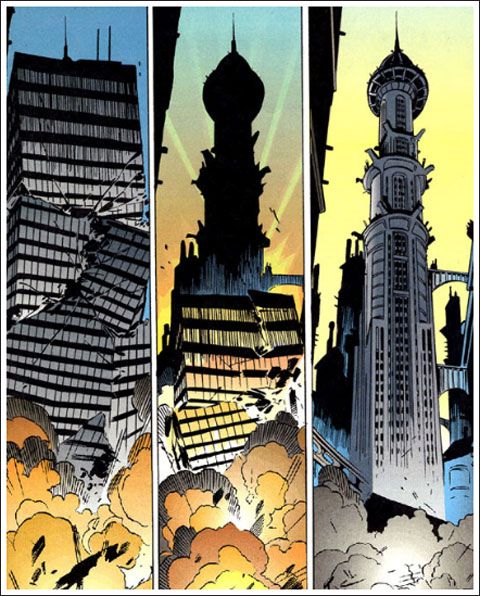This post by Jimmy Stamp in which he uses the 1992 Batman crossover "Destroyer" as an entry point to examine the architecture of Gotham City may be my favorite read of the past day or so.
I wasn't reading comics at the time, so I'm unfamiliar with the Alan Grant storyline, which involved an overzealous architectural historian dubbed the Mad Bomber who dedicates himself to destroying the modern buildings that obscured the city's original Neo-gothic structures. It's an interesting premise with an ulterior motive: It altered the comic-book cityscape to reflect Anton Furst's vision for the Tim Burton movies.
"Since its inception, Gotham City has been presented as the embodiment of the urban fears that helped give rise to the American suburbs, the safe havens from the city that they are," Stamp writes on his fascinating Life Without Buildings blog. "Gotham City has always been a dark place, full of steam and rats and crime. A city of graveyards and gargoyles; alleys and asylums. Gotham is a nightmare, a distorted metropolis that corrupts the souls of good men. In the excellent book, Woody Allen on Woody Allen
, the famously nebbish auteur discusses his moody, Brechtian comedy Shadows and Fog, which takes place over the course of a single night in a vaguely European village. 'Once you get out in the night, there is a sense that civilization is gone. All the stores are closed, everything is dark and it’s a different feeling. You start to realize that the city is just a superimposed man-made convention and that the real thing that you’re living on is a planet. It’s a wild thing in nature. All the civilization that protects you and enables you to lie to yourself about life is all man-made and superimposed.' In other words, civilization ends at night. And in Gotham City, it is always night."
(via Sean Witzke)


